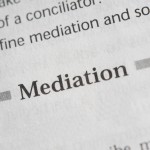Often the mediator must deal with a case of a chain reaction involving a subsequent medical error. This involves knowledge of the Florida Standard Jury Instruction 401.12. (b) Concurring cause…need not be only cause…”contributes substantially…”
A wrongdoer is liable for the ultimate result, even where mistake or negligence of a treating doctor compounds the injury. An initial tortfeasor may be held responsible for all subsequent injuries, including those caused by medical negligence. This rule applies even where the initial and subsequent tortfeasors are both doctors. In this case, be aware that there may be multiple parties to the lawsuit; each trying to settle for only its part of the total damage.
Where a defense expert’s version of events suggests that surgery was not indicated, and surgery would make the injury worse, the Court would have to charge the jury using the intervening cause instruction: Where one who has suffered personal injuries as a result of the negligence of another seeks medical treatment from a physician or surgeon, and the injured person’s injuries are thereafter aggravated or increased by the negligence, mistake, or lack of skill of such treatment, the law regards the negligence of the one causing the original injury as the proximate cause of the damages flowing from the later negligent, unskillful, or unsuccessful treatment of the physician or surgeon.
Although a mediator may not advise the parties of the law applicable to the case at hand, he/she must be aware of the present state of the law, and must see that all parties are guided accordingly. If one party is obviously mistaken as to the law, the mediator may suggest that the party (if pro se) consult an attorney before continuing with the mediation.
You can contact mediator Stanley Weissman by calling (561) 994-4540

 As Florida attorneys are aware, mediation is compulsory in all civil cases. Moreover, mediation is the fast, efficient, and less costly way of resolving litigation. The mediator, whether appointed by the court or chosen by the litigants, is an experienced, unbiased, and disinterested attorney whose job it is to help the litigants and attorneys reach an amicable resolution to their case.
As Florida attorneys are aware, mediation is compulsory in all civil cases. Moreover, mediation is the fast, efficient, and less costly way of resolving litigation. The mediator, whether appointed by the court or chosen by the litigants, is an experienced, unbiased, and disinterested attorney whose job it is to help the litigants and attorneys reach an amicable resolution to their case.